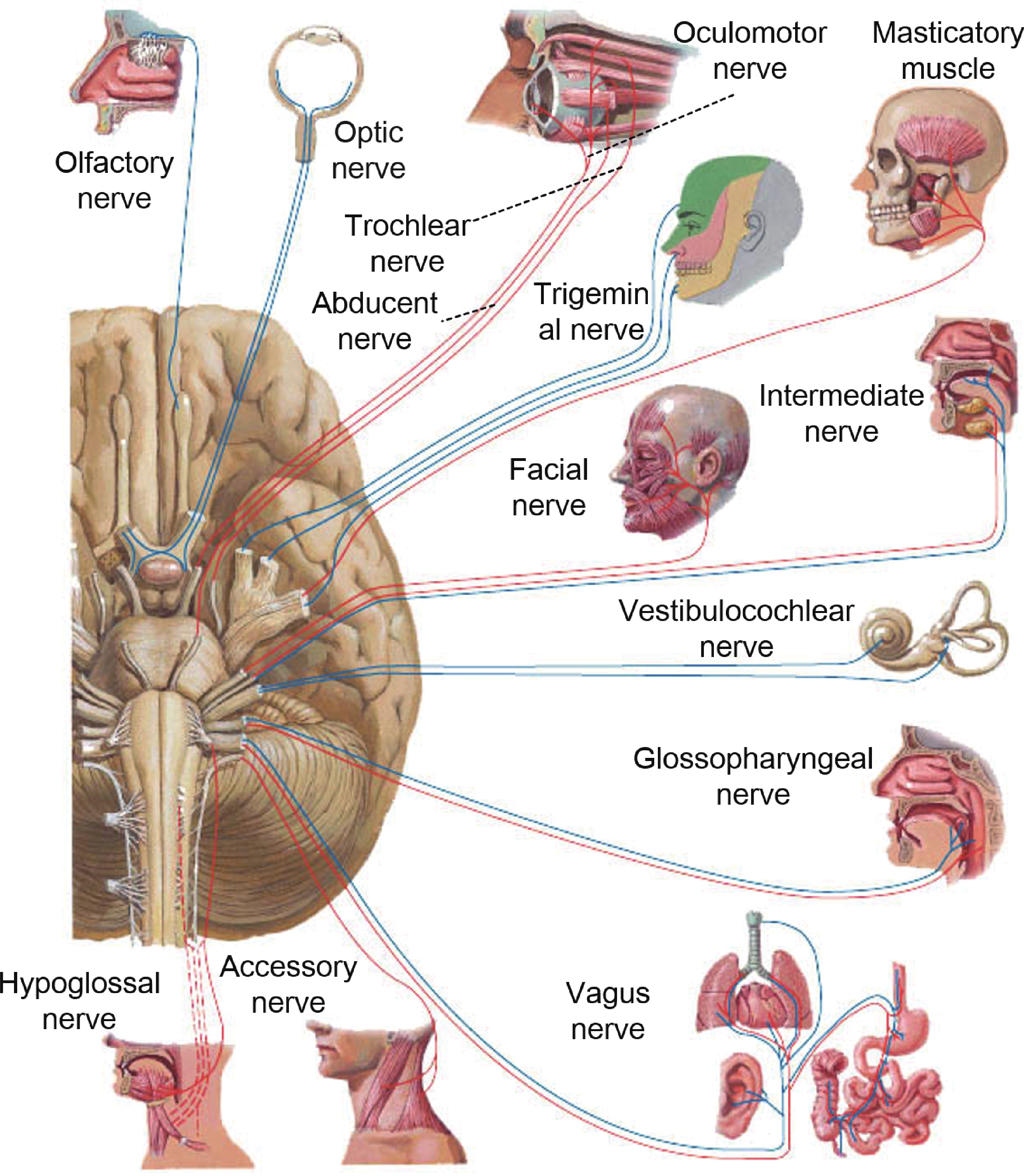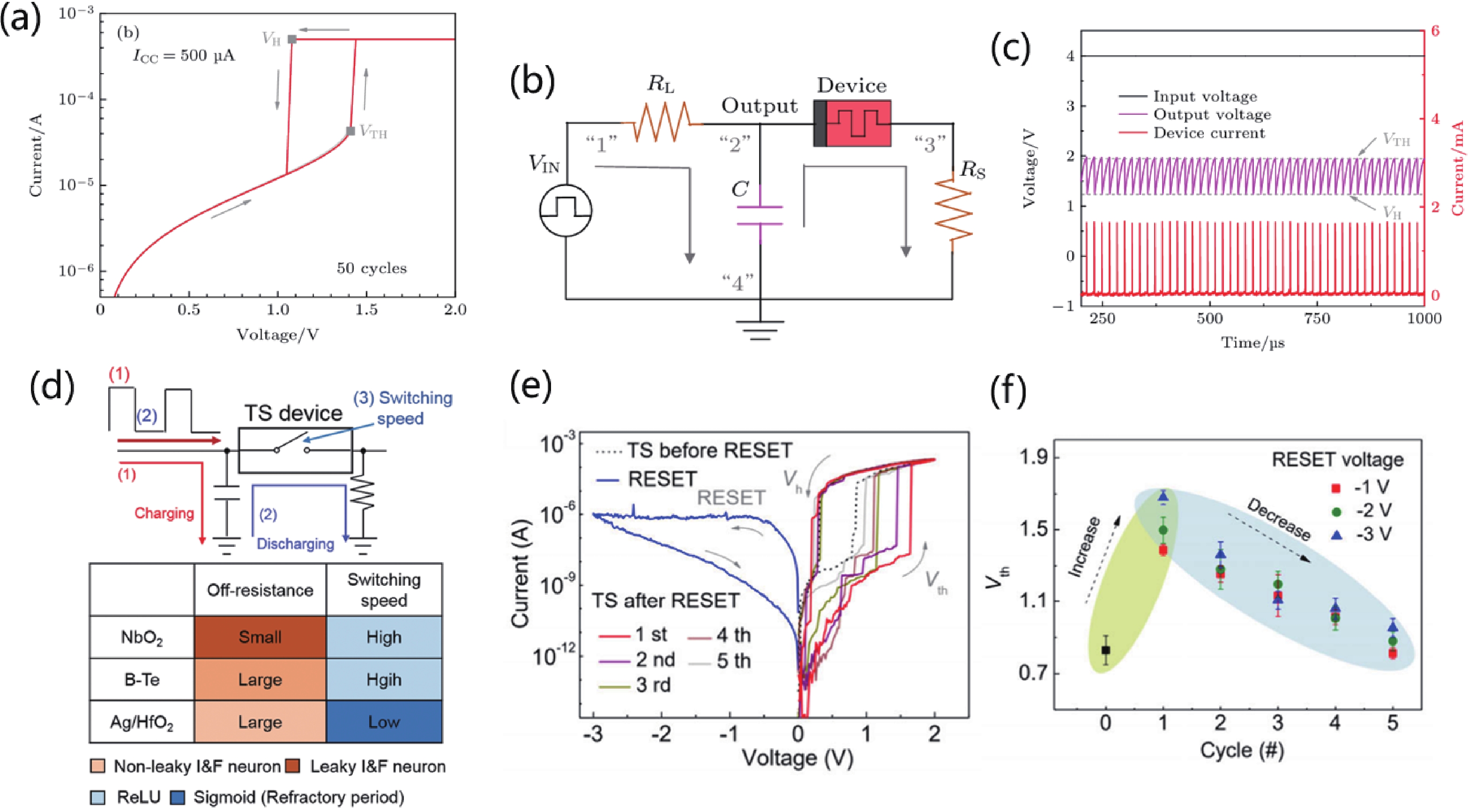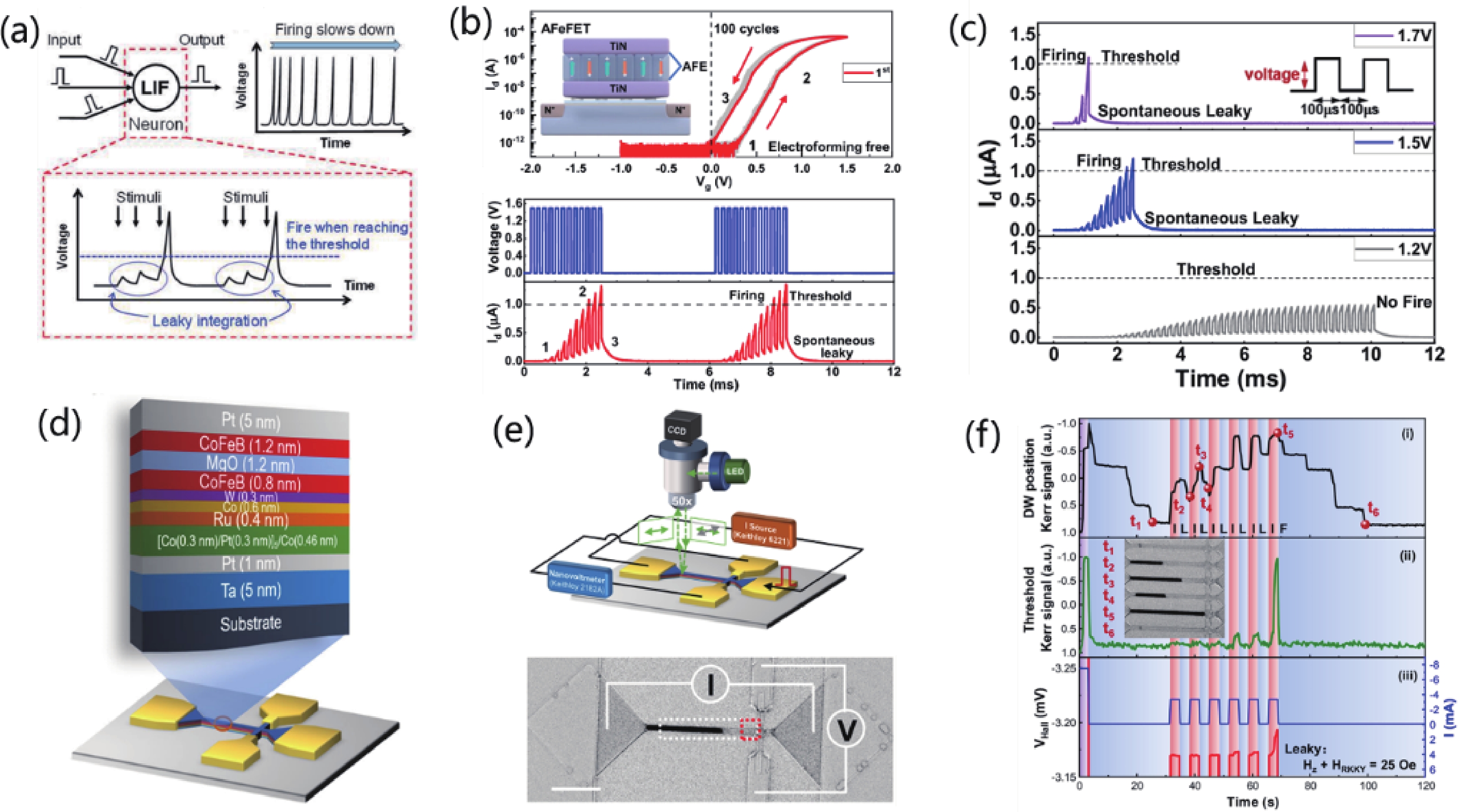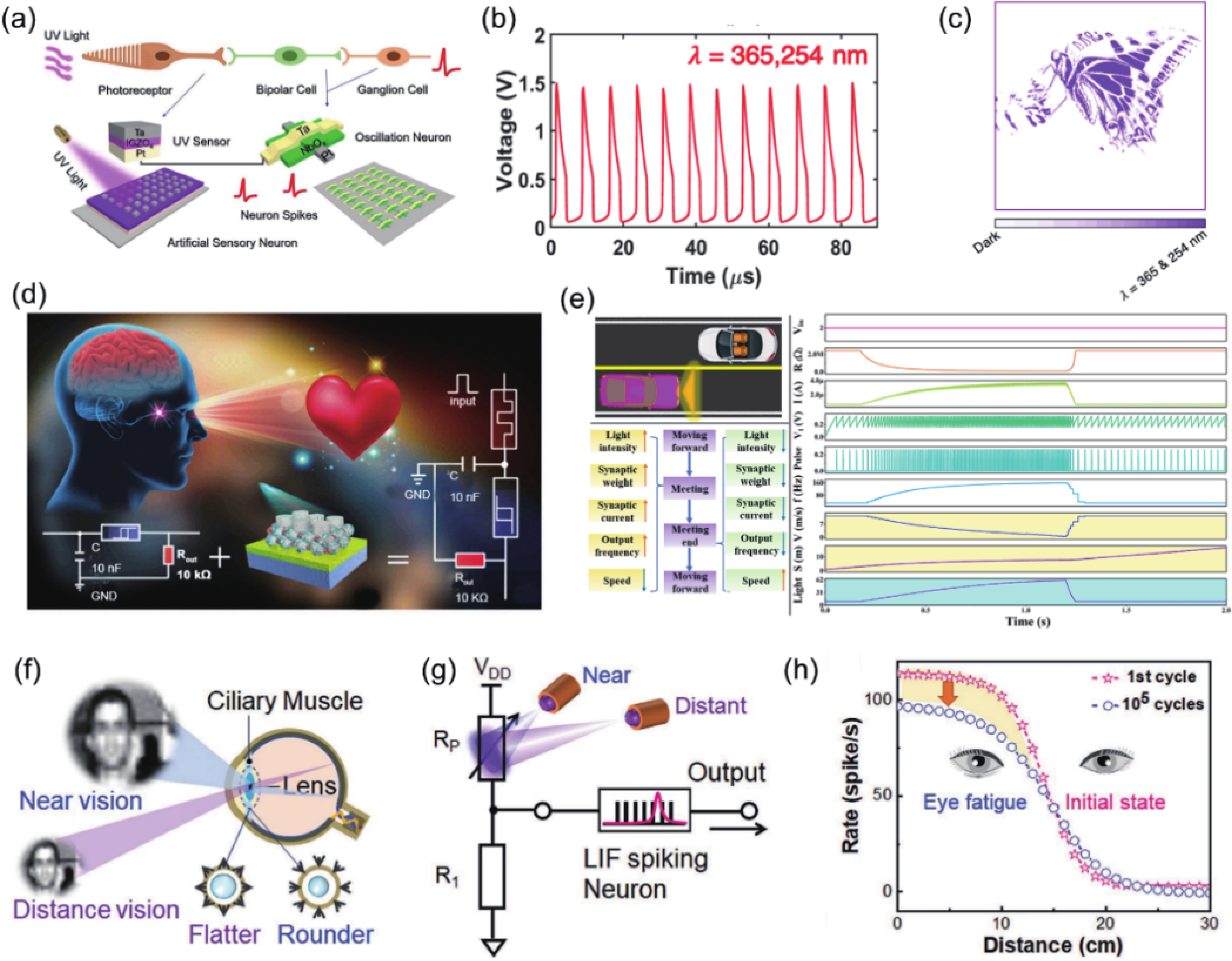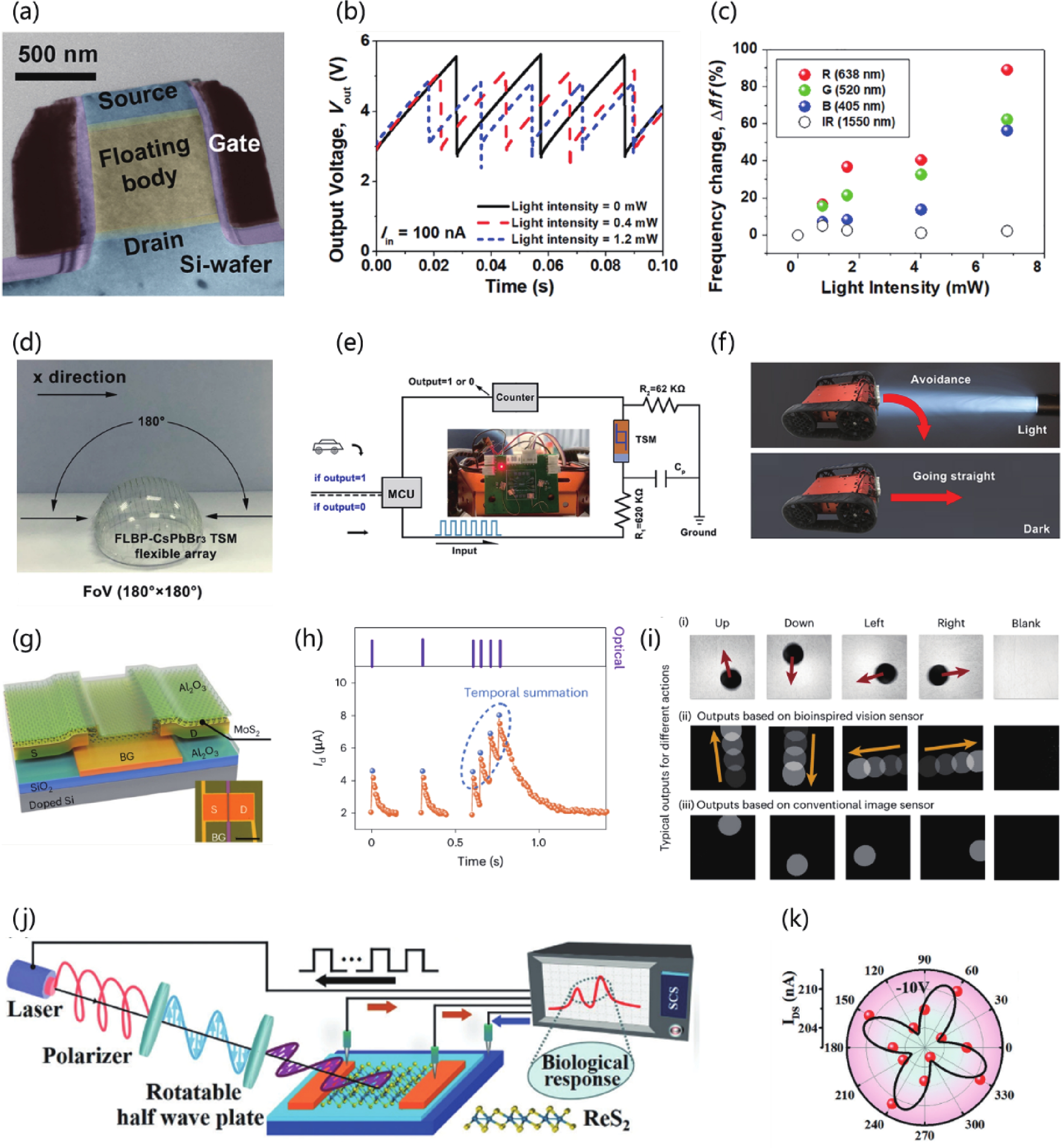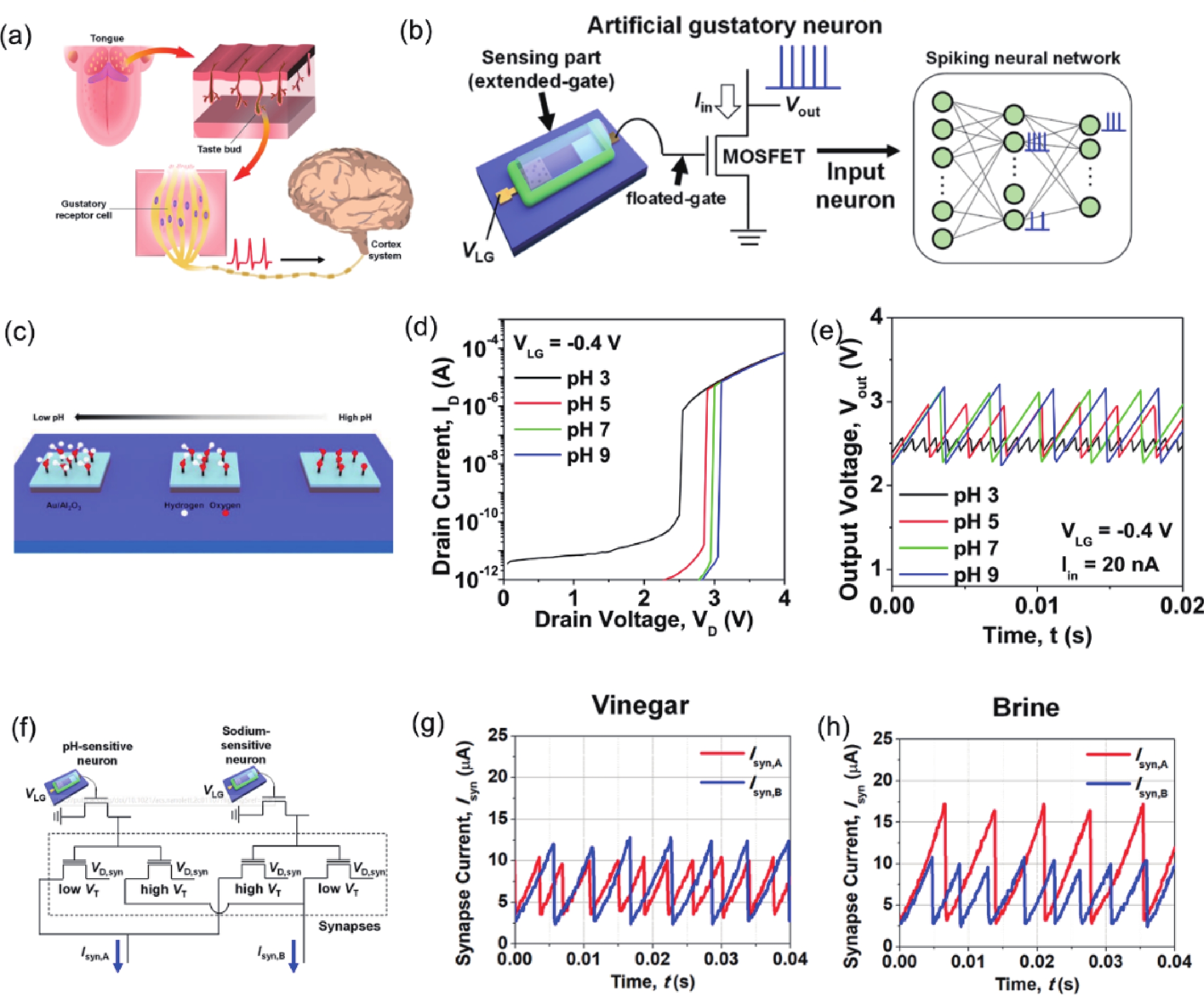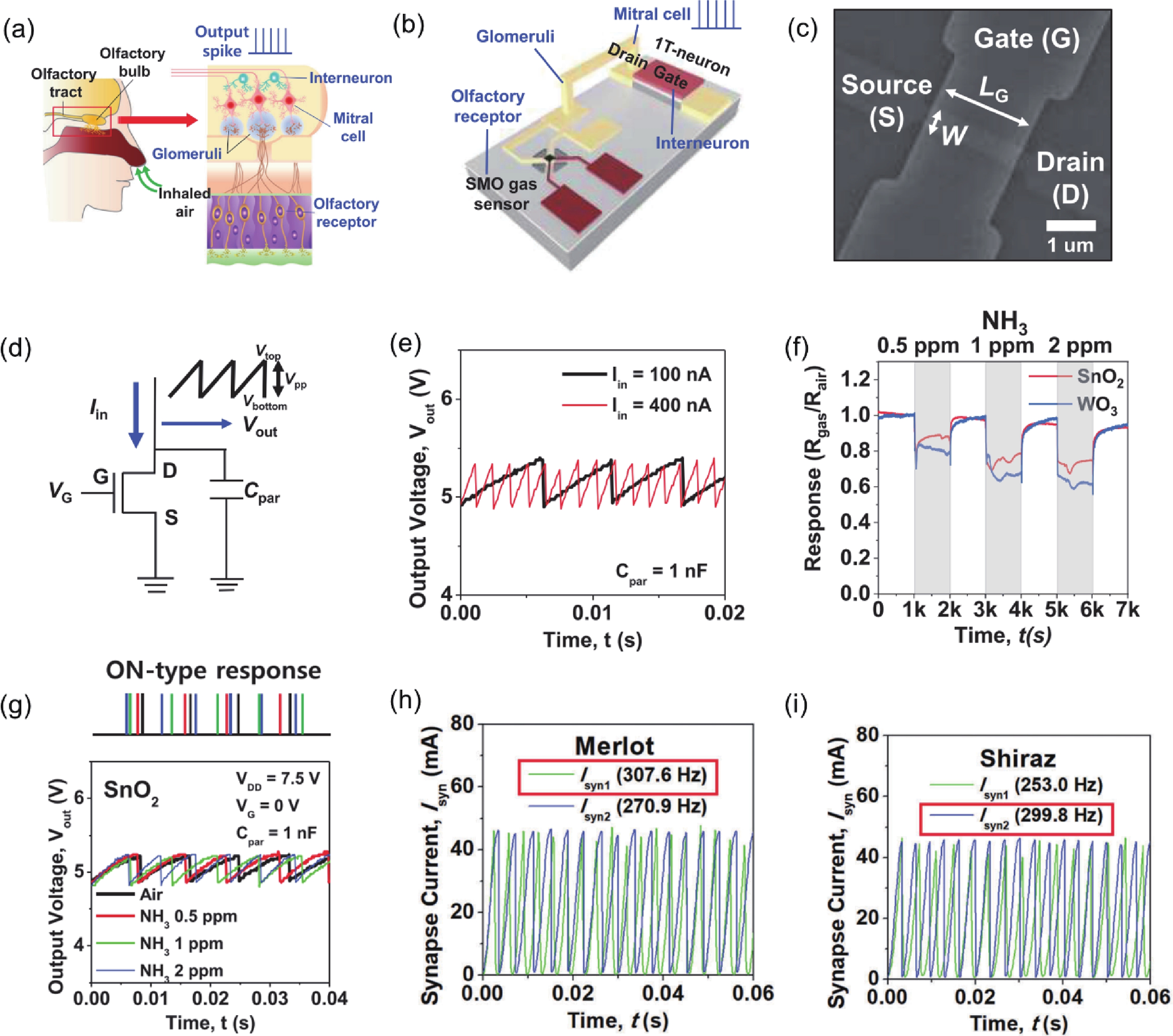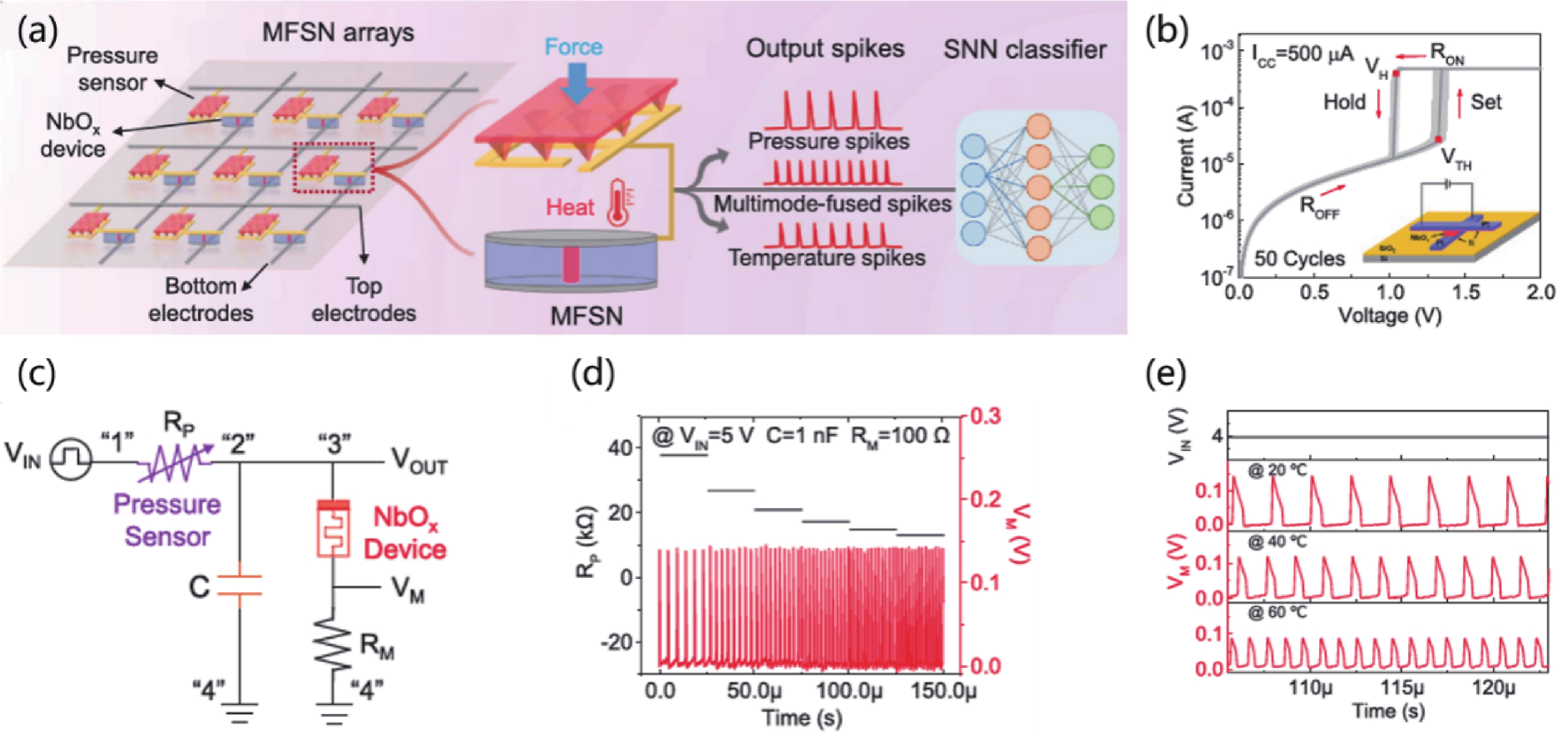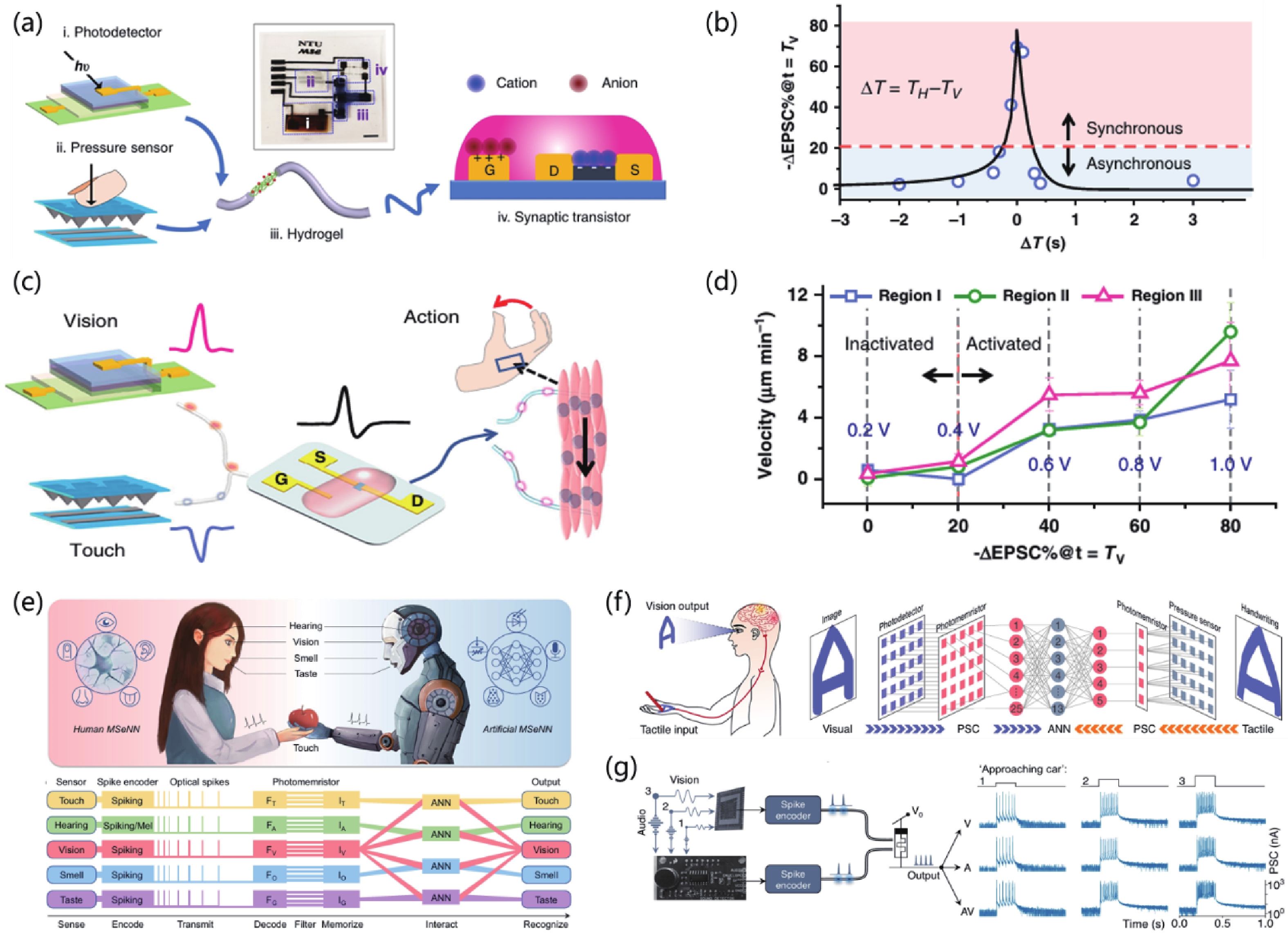| Citation: |
Jiale Shao, Hongwei Ying, Peihong Cheng, Lingxiang Hu, Xianhua Wei, Zongxiao Li, Huanming Lu, Zhizhen Ye, Fei Zhuge. Artificial sensory neurons and their applications[J]. Journal of Semiconductors, 2025, 46(1): 011606. doi: 10.1088/1674-4926/24080039
****
J L Shao, H W Ying, P H Cheng, L X Hu, X H Wei, Z X Li, H M Lu, Z Z Ye, and F Zhuge, Artificial sensory neurons and their applications[J]. J. Semicond., 2025, 46(1), 011606 doi: 10.1088/1674-4926/24080039
|
Artificial sensory neurons and their applications
DOI: 10.1088/1674-4926/24080039
CSTR: 32376.14.1674-4926.24080039
More Information-
Abstract
With the rapid development of artificial intelligence (AI) technology, the demand for high-performance and energy-efficient computing is increasingly growing. The limitations of the traditional von Neumann computing architecture have prompted researchers to explore neuromorphic computing as a solution. Neuromorphic computing mimics the working principles of the human brain, characterized by high efficiency, low energy consumption, and strong fault tolerance, providing a hardware foundation for the development of new generation AI technology. Artificial neurons and synapses are the two core components of neuromorphic computing systems. Artificial perception is a crucial aspect of neuromorphic computing, where artificial sensory neurons play an irreplaceable role thus becoming a frontier and hot topic of research. This work reviews recent advances in artificial sensory neurons and their applications. First, biological sensory neurons are briefly described. Then, different types of artificial neurons, such as transistor neurons and memristive neurons, are discussed in detail, focusing on their device structures and working mechanisms. Next, the research progress of artificial sensory neurons and their applications in artificial perception systems is systematically elaborated, covering various sensory types, including vision, touch, hearing, taste, and smell. Finally, challenges faced by artificial sensory neurons at both device and system levels are summarized. -
References
[1] Mead C. How we created neuromorphic engineering. Nat Electron, 2020, 3(7), 434 doi: 10.1038/s41928-020-0448-2[2] Wang J J, Xu B Z, Zhu Y F, et al. Microcantilever sensors for biochemical detection. J Semicond, 2023, 44(2), 023105 doi: 10.1088/1674-4926/44/2/023105[3] Cho S W, Jo C, Kim Y H, et al. Progress of materials and devices for neuromorphic vision sensors. Nanomicro Lett, 2022, 14(1), 203 doi: 10.1007/s40820-022-00945-y[4] Liao F Y, Zhou F C, Chai Y. Neuromorphic vision sensors: Principle, progress and perspectives. J Semicond, 2021, 42(1), 013105 doi: 10.1088/1674-4926/42/1/013105[5] Chen Z S, Chen Z, Song Z L, et al. Smart gas sensor arrays powered by artificial intelligence. J Semicond, 2019, 40(11), 111601 doi: 10.1088/1674-4926/40/11/111601[6] Nazemi H, Joseph A, Park J, et al. Advanced micro-and nano-gas sensor technology: A review. Sensors, 2019, 19(6), 1285 doi: 10.3390/s19061285[7] Jiang H Y, Zhang M, Bhandari B, et al. Application of electronic tongue for fresh foods quality evaluation: A review. Food Rev Int, 2018, 34(8), 746 doi: 10.1080/87559129.2018.1424184[8] Li S Y, Du D D, Wang J, et al. Application progress of intelligent flavor sensing system in the production process of fermented foods based on the flavor properties. Crit Rev Food Sci Nutr, 2024, 64(12), 3764 doi: 10.1080/10408398.2022.2134982[9] Chen J W, Zhu Y T, Chang X H, et al. Recent progress in essential functions of soft electronic skin. Adv Funct Mater, 2021, 31(42), 2104686 doi: 10.1002/adfm.202104686[10] Liu X Y. The more and less of electronic-skin sensors. Science, 2020, 370(6519), 910 doi: 10.1126/science.abe7366[11] Sanderson K. Electronic skin: From flexibility to a sense of touch. Nature, 2021, 591(7851), 685 doi: 10.1038/d41586-021-00739-z[12] Joyashiki T, Wada C. Validation of a body-conducted sound sensor for respiratory sound monitoring and a comparison with several sensors. Sensors, 2020, 20(3), 942 doi: 10.3390/s20030942[13] Hodgkin A L, Huxley A F. A quantitative description of membrane current and its application to conduction and excitation in nerve. J Physiol, 1952, 117(4), 500 doi: 10.1113/jphysiol.1952.sp004764[14] Bugmann G. Summation and multiplication: Two distinct operation domains of leaky integrate-and-fire neurons. Netw Comput Neural Syst, 1991, 2(4), 489 doi: 10.1088/0954-898X_2_4_010[15] Burkitt A N. A review of the integrate-and-fire neuron model: II. Inhomogeneous synaptic input and network properties. Biol Cybern, 2006, 95(2), 97 doi: 10.1007/s00422-006-0082-8[16] Smith G D, Cox C L, Sherman S M, et al. Fourier analysis of sinusoidally driven thalamocortical relay neurons and a minimal integrate-and-fire-or-burst model. J Neurophysiol, 2000, 83(1), 588 doi: 10.1152/jn.2000.83.1.588[17] Wigington R L. A new concept in computing. Proc IRE, 1959, 47(4), 516 doi: 10.1109/JRPROC.1959.287311[18] Aliyeva G N, Kalantarov V K. Structural stability for FitzHugh-Nagumo equations. Appl Comput Math-Bak, 2011, 10(2), 289[19] Dai S L, Zhao Y W, Wang Y, et al. Recent advances in transistor-based artificial synapses. Adv Funct Mater, 2019, 29(42), 1903700 doi: 10.1002/adfm.201903700[20] Shen L F, Hu L X, Kang F W, et al. Optoelectronic neuromorphic devices and their applications. Acta Phys Sin, 2022, 71(14), 148505 doi: 10.7498/aps.71.20220111[21] Ielmini D, Ambrogio S. Emerging neuromorphic devices. Nanotechnology, 2020, 31(9), 092001 doi: 10.1088/1361-6528/ab554b[22] Prezioso M, Merrikh-Bayat F, Hoskins B D, et al. Training and operation of an integrated neuromorphic network based on metal-oxide memristors. Nature, 2015, 521(7550), 61 doi: 10.1038/nature14441[23] Jerry M, Chen P Y, Zhang J C, et al. Ferroelectric FET analog synapse for acceleration of deep neural network training. 2017 IEEE International Electron Devices Meeting (IEDM), 2017, 6.2.1 doi: 10.1109/IEDM.2017.8268338[24] Zhang C, Ye W B, Zhou K, et al. Bioinspired artificial sensory nerve based on nafion memristor. Adv Funct Mater, 2019, 29(20), 1808783 doi: 10.1002/adfm.201808783[25] Hu L X, Yang J, Wang J R, et al. All-optically controlled memristor. 2020: arXiv: 2004.08077[26] Hu L X, Yang J, Wang J R, et al. All-optically controlled memristor for optoelectronic neuromorphic computing. Adv Funct Mater, 2021, 31(4), 2005582 doi: 10.1002/adfm.202005582[27] Yang J, Hu L X, Shen L F, et al. Optically driven intelligent computing with ZnO memristor. Fundam Res, 2022, 4(1), 158 doi: 10.1016/j.fmre.2022.06.019[28] Hu L X, Shao J L, Wang J R, et al. In situ cryptography in a neuromorphic vision sensor based on light-driven memristors. Appl Phys Rev, 2024, 11(1), 011411 doi: 10.1063/5.0185502[29] Liu L, Wang D, Wang D D, et al. Domain wall magnetic tunnel junction-based artificial synapses and neurons for all-spin neuromorphic hardware. Nat Commun, 2024, 15(1), 4534 doi: 10.1038/s41467-024-48631-4[30] Cao R R, Zhang X M, Liu S, et al. Compact artificial neuron based on anti-ferroelectric transistor. Nat Commun, 2022, 13(1), 7018 doi: 10.1038/s41467-022-34774-9[31] Danneville F, Loyez C, Carpentier K, et al. A Sub-35 pW Axon-Hillock artificial neuron circuit. Solid State Electron, 2019, 153, 88 doi: 10.1016/j.sse.2019.01.002[32] Han J K, Kang M G, Jeong J, et al. Artificial olfactory neuron for an in-sensor neuromorphic nose. Adv Sci, 2022, 9(18), 2106017 doi: 10.1002/advs.202106017[33] Han J K, Oh J, Yu J M, et al. A vertical silicon nanowire based single transistor neuron with excitatory, inhibitory, and myelination functions for highly scalable neuromorphic hardware. Small, 2021, 17(49), 2103775 doi: 10.1002/smll.202103775[34] Kim S, Lee Y, Kim H D, et al. A tactile sensor system with sensory neurons and a perceptual synaptic network based on semivolatile carbon nanotube transistors. NPG Asia Mater, 2020, 12(1), 76 doi: 10.1038/s41427-020-00258-9[35] Pei Y F, Yan L, Wu Z H, et al. Artificial visual perception nervous system based on low-dimensional material photoelectric memristors. ACS Nano, 2021, 15(11), 17319 doi: 10.1021/acsnano.1c04676[36] Hu L X, Li Z X, Shao J L, et al. Electronically reconfigurable memristive neuron capable of operating in both excitation and inhibition modes. Nano Lett, 2024, 24(35), 10865 doi: 10.1021/acs.nanolett.4c02470[37] Tan H W, Zhou Y F, Tao Q Z, et al. Bioinspired multisensory neural network with crossmodal integration and recognition. Nat Commun, 2021, 12(1), 1120 doi: 10.1038/s41467-021-21404-z[38] Wang D, Tang R F, Lin H, et al. Spintronic leaky-integrate-fire spiking neurons with self-reset and winner-takes-all for neuromorphic computing. Nat Commun, 2023, 14(1), 1068 doi: 10.1038/s41467-023-36728-1[39] Wright C D, Hosseini P, Diosdado J A V. Beyond von-Neumann computing with nanoscale phase-change memory devices. Adv Funct Mater, 2013, 23(18), 2248 doi: 10.1002/adfm.201202383[40] Jones H R, Srinivasan J, Allam G J, et al. Netter's Neurology. 3rd edition. Amsterdam: Elsevier Saunders, 2019[41] Hubel D H, Wiesel T N. Brain and visual perception: The story of a 25-year collaboration. New York: Oxford University Press, 2004 doi: 10.1093/acprof:oso/9780195176186.001.0001[42] Kornijcuk V, Lim H, Seok J Y, et al. Leaky integrate-and-fire neuron circuit based on floating-gate integrator. Front Neurosci, 2016, 10, 212 doi: 10.3389/fnins.2016.00212[43] Kwon M W, Baek M H, Hwang S, et al. Integrate-and-fire neuron circuit using positive feedback field effect transistor for low power operation. J Appl Phys, 2018, 124(15), 152107 doi: 10.1063/1.5031929[44] Chatterjee D, Kottantharayil A. A CMOS compatible bulk FinFET-based ultra low energy leaky integrate and fire neuron for spiking neural networks. IEEE Electron Device Lett, 2019, 40(8), 1301 doi: 10.1109/LED.2019.2924259[45] Han J W, Meyyappan M. Leaky integrate-and-fire biristor neuron. IEEE Electron Device Lett, 2018, 39(9), 1457 doi: 10.1109/LED.2018.2856092[46] Han J K, Yun G J, Han S J, et al. One biristor-two transistor (1B2T) neuron with reduced output voltage and pulsewidth for energy-efficient neuromorphic hardware. IEEE Trans Electron Devices, 2021, 68(1), 430 doi: 10.1109/TED.2020.3036018[47] Feng G D, Jiang J, Zhao Y H, et al. A sub-10 nm vertical organic/inorganic hybrid transistor for pain-perceptual and sensitization-regulated nociceptor emulation. Adv Mater, 2020, 32(6), 1906171 doi: 10.1002/adma.201906171[48] Feng G D, Jiang J, Li Y R, et al. Flexible vertical photogating transistor network with an ultrashort channel for in-sensor visual nociceptor. Adv Funct Mater, 2021, 31(36), 2104327 doi: 10.1002/adfm.202104327[49] You J Q, Li C, Yang D L, et al. Double dielectric layer metal-oxide memristor: Design and applications. J Inorg Mater, 2023, 38(4), 387 doi: 10.15541/jim20220760[50] Zhuge X, Zhu R X, Wang J M, et al. Oxide memristors for brain-inspired computing. J Inorg Mater, 2023, 38(10), 1149 doi: 10.15541/jim20230066[51] Lashkare S, Chouhan S, Chavan T, et al. PCMO RRAM for integrate-and-fire neuron in spiking neural networks. IEEE Electron Device Lett, 2018, 39(4), 484 doi: 10.1109/LED.2018.2805822[52] Tuma T, Pantazi A, Le Gallo M, et al. Stochastic phase-change neurons. Nat Nanotechnol, 2016, 11(8), 693 doi: 10.1038/nnano.2016.70[53] Wang J J, Hu S G, Zhan X T, et al. Handwritten-digit recognition by hybrid convolutional neural network based on HfO2 memristive spiking-neuron. Sci Rep, 2018, 8(1), 12546 doi: 10.1038/s41598-018-30768-0[54] Zhu J X, Zhang X M, Wang R, et al. Flexible memristive spiking neuron for neuromorphic sensing and computing. Acta Phys Sin, 2022, 71(14), 148503 doi: 10.7498/aps.71.20212323[55] Gu Y N, Liang Y, Wang G Y, et al. Design of NbOx memristive neuron and its application in spiking neural networks. Acta Phys Sin, 2022, 71(11), 110501 doi: 10.7498/aps.71.20220141[56] Stoliar P, Tranchant J, Corraze B, et al. A leaky-integrate-and-fire neuron analog realized with a mott insulator. Adv Funct Mater, 2017, 27(11), 1604740 doi: 10.1002/adfm.201604740[57] Adda C, Corraze B, Stoliar P, et al. Mott insulators: A large class of materials for leaky integrate and fire (LIF) artificial neuron. J Appl Phys, 2018, 124(15), 152124 doi: 10.1063/1.5042756[58] Parihar A, Jerry M, Datta S, et al. Stochastic IMT (insulator-metal-transition) neurons: An interplay of thermal and threshold noise at bifurcation. Front Neurosci, 2018, 12, 210 doi: 10.3389/fnins.2018.00210[59] Chen P, Zhang X M, Wu Z H, et al. High-yield and uniform NbOx-based threshold switching devices for neuron applications. IEEE Trans Electron Devices, 2022, 69(5), 2391 doi: 10.1109/TED.2022.3161614[60] Fantini P, Polino N, Ghetti A, et al. Threshold switching by bipolar avalanche multiplication in ovonic chalcogenide glasses. Adv Electron Mater, 2023, 9(7), 2300037 doi: 10.1002/aelm.202300037[61] Lee J, Cho S W, Lee Y W, et al. Rational engineering of a switching material for an Ovonic threshold switching (OTS) device with mitigated electroforming. J Mater Chem C, 2022, 10(47), 18033 doi: 10.1039/D2TC03044F[62] Seo H K, Ryu J J, Lee S Y, et al. Material and structural engineering of ovonic threshold switch for highly reliable performance. Adv Electron Mater, 2022, 8(9), 2200161 doi: 10.1002/aelm.202200161[63] Sun Y M, Song C, Yin S Q, et al. Design of a controllable redox-diffusive threshold switching memristor. Adv Electron Mater, 2020, 6(11), 2000695 doi: 10.1002/aelm.202000695[64] Wang Z R, Joshi S, Savel’ev S E, et al. Memristors with diffusive dynamics as synaptic emulators for neuromorphic computing. Nat Mater, 2017, 16(1), 101 doi: 10.1038/nmat4756[65] Zhang X M, Wang W, Liu Q, et al. An artificial neuron based on a threshold switching memristor. IEEE Electron Device Lett, 2018, 39(2), 308 doi: 10.1109/LED.2017.2782752[66] Lee D, Kwak M, Moon K, et al. Various threshold switching devices for integrate and fire neuron applications. Adv Electron Mater, 2019, 5(9), 1800866 doi: 10.1002/aelm.201800866[67] Valasek J. Piezo-electric and allied phenomena in rochelle salt. Phys Rev, 1921, 17(4), 475 doi: 10.1103/PhysRev.17.475[68] Ishibashi Y, Takagi Y. Note on ferroelectric domain switching. J Phys Soc Jpn, 1971, 31(2), 506 doi: 10.1143/JPSJ.31.506[69] Chen C, Yang M, Liu S, et al. Bio-inspired neurons based on novel leaky-FeFET with ultra-low hardware cost and advanced functionality for all-ferroelectric neural network. 2019 Symposium on VLSI Technology, 2019, T136 doi: 10.23919/VLSIT.2019.8776495[70] Luo J, Yu L T, Liu T Y, et al. Capacitor-less stochastic leaky-FeFET neuron of both excitatory and inhibitory connections for SNN with reduced hardware cost. 2019 IEEE International Electron Devices Meeting (IEDM), 2019, 6.4.1 doi: 10.1109/IEDM19573.2019.8993535[71] Hao X H, Zhai J W, Kong L B, et al. A comprehensive review on the progress of lead zirconate-based antiferroelectric materials. Prog Mater Sci, 2014, 63, 1 doi: 10.1016/j.pmatsci.2014.01.002[72] Katine J A, Albert F J, Buhrman R A, et al. Current-driven magnetization reversal and spin-wave excitations in Co/Cu/Co pillars. Phys Rev Lett, 2000, 84(14), 3149 doi: 10.1103/PhysRevLett.84.3149[73] Tsoi M, Jansen A G, Bass J, et al. Generation and detection of phase-coherent current-driven magnons in magnetic multilayers. Nature, 2000, 406(6791), 46 doi: 10.1038/35017512[74] Wright C D, Liu Y W, Kohary K I, et al. Arithmetic and biologically-inspired computing using phase-change materials. Adv Mater, 2011, 23(30), 3408 doi: 10.1002/adma.201101060[75] Cobley R A, Hayat H, Wright C D. A self-resetting spiking phase-change neuron. Nanotechnology, 2018, 29(19), 195202 doi: 10.1088/1361-6528/aab177[76] Mu B Y, Guo L C, Liao J H, et al. Near-infrared artificial synapses for artificial sensory neuron system. Small, 2021, 17(38), 2103837 doi: 10.1002/smll.202103837[77] Hong S, Cho H, Kang B H, et al. Neuromorphic active pixel image sensor array for visual memory. ACS Nano, 2021, 15(9), 15362 doi: 10.1021/acsnano.1c06758[78] Lee Y R, Trung T Q, Hwang B U, et al. A flexible artificial intrinsic-synaptic tactile sensory organ. Nat Commun, 2020, 11(1), 2753 doi: 10.1038/s41467-020-16606-w[79] Yin R Y, Wang D P, Zhao S F, et al. Wearable sensors-enabled human–machine interaction systems: From design to application. Adv Funct Mater, 2021, 31(11), 2008936 doi: 10.1002/adfm.202008936[80] Liu Y Q, Li E L, Wang X M, et al. Self-powered artificial auditory pathway for intelligent neuromorphic computing and sound detection. Nano Energy, 2020, 78, 105403 doi: 10.1016/j.nanoen.2020.105403[81] Gao Z Y, Chen S, Li R, et al. An artificial olfactory system with sensing, memory and self-protection capabilities. Nano Energy, 2021, 86, 106078 doi: 10.1016/j.nanoen.2021.106078[82] Chouhdry H H, Lee D H, Bag A, et al. A flexible artificial chemosensory neuronal synapse based on chemoreceptive ionogel-gated electrochemical transistor. Nat Commun, 2023, 14(1), 821 doi: 10.1038/s41467-023-36480-6[83] Yang L, Wang Z X, Zhang S, et al. Neuromorphic gustatory system with salt-taste perception, information processing, and excessive-intake warning capabilities. Nano Lett, 2023, 23(1), 8 doi: 10.1021/acs.nanolett.2c02775[84] Bag A, Ghosh G, Sultan M J, et al. Bio-inspired sensory receptors for artificial-intelligence perception. Adv Mater, 2024, 2403150 doi: 10.1002/adma.202403150[85] Jung Y H, Park B, Kim J U, et al. Bioinspired electronics for artificial sensory systems. Adv Mater, 2019, 31(34), 1803637 doi: 10.1002/adma.201803637[86] Tang J S, Yuan F, Shen X K, et al. Bridging biological and artificial neural networks with emerging neuromorphic devices: Fundamentals, progress, and challenges. Adv Mater, 2019, 31(49), 1902761 doi: 10.1002/adma.201902761[87] Kwon J Y, Kim J E, Kim J S, et al. Artificial sensory system based on memristive devices. Exploration, 2024, 4(1), 20220162 doi: 10.1002/EXP.20220162[88] Yu H L, Zhu Y X, Zhu L, et al. Recent advances in transistor-based bionic perceptual devices for artificial sensory systems. Front Nanotechnol, 2022, 4, 954165 doi: 10.3389/fnano.2022.954165[89] Wu Q T, Dang B J, Lu C Y, et al. Spike encoding with optic sensory neurons enable a pulse coupled neural network for ultraviolet image segmentation. Nano Lett, 2020, 20(11), 8015 doi: 10.1021/acs.nanolett.0c02892[90] Chen C S, He Y L, Mao H W, et al. A photoelectric spiking neuron for visual depth perception. Adv Mater, 2022, 34(20), 2201895 doi: 10.1002/adma.202201895[91] Bao L, Kang J, Fang Y C, et al. Artificial shape perception retina network based on tunable memristive neurons. Sci Rep, 2018, 8(1), 13727 doi: 10.1038/s41598-018-31958-6[92] Babich D, Cario L, Corraze B, et al. Artificial electro-optical neuron integrating hot electrons in a mott insulator. Phys Rev Appl, 2022, 17(1), 014040 doi: 10.1103/PhysRevApplied.17.014040[93] Lee H, Cho S W, Kim S J, et al. Three-terminal ovonic threshold switch (3T-OTS) with tunable threshold voltage for versatile artificial sensory neurons. Nano Lett, 2022, 22(2), 733 doi: 10.1021/acs.nanolett.1c04125[94] Zeng B Y, Zhang X H, Gao C S, et al. MXene-based memristor for artificial optoelectronic neuron. IEEE Trans Electron Devices, 2023, 70(3), 1359 doi: 10.1109/TED.2023.3234881[95] Han J K, Geum D M, Lee M W, et al. Bioinspired photoresponsive single transistor neuron for a neuromorphic visual system. Nano Lett, 2020, 20(12), 8781 doi: 10.1021/acs.nanolett.0c03652[96] Han J K, Sim J, Geum D M, et al. 3D stackable broadband photoresponsive InGaAs biristor neuron for a neuromorphic visual system with near 1 V operation. 2021 IEEE International Electron Devices Meeting (IEDM), 2021, 1 doi: 10.1109/IEDM19574.2021.9720654[97] Wang Y, Gong Y, Huang S M, et al. Memristor-based biomimetic compound eye for real-time collision detection. Nat Commun, 2021, 12(1), 5979 doi: 10.1038/s41467-021-26314-8[98] Wang X J, Chen C S, Zhu L, et al. Vertically integrated spiking cone photoreceptor arrays for color perception. Nat Commun, 2023, 14(1), 3444 doi: 10.1038/s41467-023-39143-8[99] Chen J W, Zhou Z, Kim B J, et al. Optoelectronic graded neurons for bioinspired in-sensor motion perception. Nat Nanotechnol, 2023, 18(8), 882 doi: 10.1038/s41565-023-01379-2[100] Xie D D, Gao G, Tian B B, et al. Porous metal-organic framework/ReS2 heterojunction phototransistor for polarization-sensitive visual adaptation emulation. Adv Mater, 2023, 35(26), 2212118 doi: 10.1002/adma.202212118[101] Xie D D, Yin K, Yang Z J, et al. Polarization-perceptual anisotropic two-dimensional ReS2 neuro-transistor with reconfigurable neuromorphic vision. Mater Horiz, 2022, 9(5), 1448 doi: 10.1039/D1MH02036F[102] Zhang X M, Zhuo Y, Luo Q, et al. An artificial spiking afferent nerve based on mott memristors for neurorobotics. Nat Commun, 2020, 11(1), 51 doi: 10.1038/s41467-019-13827-6[103] Li F F, Wang R, Song C Y, et al. A skin-inspired artificial mechanoreceptor for tactile enhancement and integration. ACS Nano, 2021, 15(10), 16422 doi: 10.1021/acsnano.1c05836[104] Yoon J H, Wang Z R, Kim K M, et al. An artificial nociceptor based on a diffusive memristor. Nat Commun, 2018, 9(1), 417 doi: 10.1038/s41467-017-02572-3[105] Lee J, Kim S, Park S, et al. An artificial tactile neuron enabling spiking representation of stiffness and disease diagnosis. Adv Mater, 2022, 34(24), 2201608 doi: 10.1002/adma.202201608[106] Han J K, Tcho I W, Jeon S B, et al. Self-powered artificial mechanoreceptor based on triboelectrification for a neuromorphic tactile system. Adv Sci, 2022, 9(9), 2105076 doi: 10.1002/advs.202105076[107] Waseem A, Abdullah A, Bagal I V, et al. Self-powered and flexible piezo-sensors based on conductivity-controlled GaN nanowire-arrays for mimicking rapid- and slow-adapting mechanoreceptors. NPJ Flex Electron, 2022, 6(1), 58 doi: 10.1038/s41528-022-00197-1[108] Yang J H, Mao S C, Chen K T, et al. Emulating nociceptive receptor and LIF neuron behavior via ZrOx-based threshold switching memristor. Adv Electron Mater, 2023, 9(3), 2201006 doi: 10.1002/aelm.202201006[109] Patil H, Kim H, Kadam K D, et al. Flexible organic–inorganic halide perovskite-based diffusive memristor for artificial nociceptors. ACS Appl Mater Interfaces, 2023, 15(10), 13238 doi: 10.1021/acsami.2c16481[110] Zhou P, Yao Z, Ma J, et al. A piezoelectric sensing neuron and resonance synchronization between auditory neurons under stimulus. Chaos Solitons Fractals, 2021, 145, 110751 doi: 10.1016/j.chaos.2021.110751[111] Yun S Y, Han J, Lee S, et al. Self-aware artificial auditory neuron with a triboelectric sensor for spike-based neuromorphic hardware. Nano Energy, 2023, 109, 108322 doi: 10.1016/j.nanoen.2023.108322[112] Han J K, Park S C, Yu J M, et al. A bioinspired artificial gustatory neuron for a neuromorphic based electronic tongue. Nano Lett, 2022, 22(13), 5244 doi: 10.1021/acs.nanolett.2c01107[113] Park S C, Jeong H J, Heo M, et al. Carbon nanotube-based ion-sensitive field-effect transistors with an on-chip reference electrode toward wearable sodium sensing. ACS Appl Electron Mater, 2021, 3(6), 2580 doi: 10.1021/acsaelm.1c00152[114] Bruen D, Delaney C, Chung J, et al. 3D printed sugar-sensing hydrogels. Macromol Rapid Commun, 2020, 41(9), 2070020 doi: 10.1002/marc.202070020[115] Wu X, Miyake K, Tahara Y, et al. Quantification of bitterness of coffee in the presence of high-potency sweeteners using taste sensors. Sens Actuat B Chem, 2020, 309, 127784 doi: 10.1016/j.snb.2020.127784[116] Wu K D, Debliquy M, Zhang C. Metal–oxide–semiconductor resistive gas sensors for fish freshness detection. Compr Rev Food Sci Food Saf, 2023, 22(2), 913 doi: 10.1111/1541-4337.13095[117] Wu X M, Li E L, Liu Y Q, et al. Artificial multisensory integration nervous system with haptic and iconic perception behaviors. Nano Energy, 2021, 85, 106000 doi: 10.1016/j.nanoen.2021.106000[118] Zhao T T, Yuan L, Liu H, et al. Bimodal bioinspired sensory neuron with tactile and visual perceptual capabilities. IEEE Electron Device Lett, 2023, 44(12), 1971 doi: 10.1109/LED.2023.3329568[119] Wan C J, Cai P Q, Guo X T, et al. An artificial sensory neuron with visual-haptic fusion. Nat Commun, 2020, 11(1), 4602 doi: 10.1038/s41467-020-18375-y[120] Zhu J X, Zhang X M, Wang R, et al. A heterogeneously integrated spiking neuron array for multimode-fused perception and object classification. Adv Mater, 2022, 34(24), 2200481 doi: 10.1002/adma.202200481[121] Jiang Y W, Li X J, Liu B, et al. Rational design of silicon structures for optically controlled multiscale biointerfaces. Nat Biomed Eng, 2018, 2(7), 508 doi: 10.1038/s41551-018-0230-1[122] Liu M J, Huang G S, Feng P, et al. Artificial neuron synapse transistor based on silicon nanomembrane on plastic substrate. J Semicond, 2017, 38(6), 064006 doi: 10.1088/1674-4926/38/6/064006[123] Woo S, Kim S. Neural oscillation of single silicon nanowire neuron device with no external bias voltage. Sci Rep, 2022, 12(1), 3516 doi: 10.1038/s41598-022-07374-2[124] Han C Y, Fang S L, Cui Y L, et al. Configurable NbOx memristors as artificial synapses or neurons achieved by regulating the forming compliance current for the spiking neural network. Adv Electron Mater, 2023, 9(6), 2300018 doi: 10.1002/aelm.202300018[125] Kim S, Lee K, Kim S, et al. Investigation of device performance for Fin angle optimization in FinFET and gate-all-around FETs for 3 nm-node and beyond. IEEE Trans Electron Devices, 2022, 69(4), 2088 doi: 10.1109/TED.2022.3154683[126] Laughlin S B, de Ruyter van Steveninck R R, Anderson J C. The metabolic cost of neural information. Nat Neurosci, 1998, 1(1), 36 doi: 10.1038/236[127] Pulido C, Ryan T A. Synaptic vesicle pools are a major hidden resting metabolic burden of nerve terminals. Sci Adv, 2021, 7(49), 9027 doi: 10.1126/sciadv.abi9027[128] Bousoulas P, Tsioustas C, Hadfield J, et al. Low power stochastic neurons from SiO2-based bilayer conductive bridge memristors for probabilistic spiking neural network applications—Part I: Experimental characterization. IEEE Trans Electron Devices, 2022, 69(5), 2360 doi: 10.1109/TED.2022.3160138[129] Lu Y F, Li Y, Li H Y, et al. Low-power artificial neurons based on Ag/TiN/HfAlOx/Pt threshold switching memristor for neuromorphic computing. IEEE Electron Device Lett, 2020, 41(8), 1245 doi: 10.1109/LED.2020.3006581[130] Wu R J, Jia S J, Gotoh T, et al. Screening switching materials with low leakage current and high thermal stability for neuromorphic computing. Adv Electron Mater, 2022, 8(9), 2200150 doi: 10.1002/aelm.202200150[131] Choi S, Kim G S, Yang J, et al. Controllable SiOx nanorod memristive neuron for probabilistic bayesian inference. Adv Mater, 2022, 34(1), 2104598 doi: 10.1002/adma.202104598[132] Hamilton T J, Afshar S, van Schaik A, et al. Stochastic electronics: A neuro-inspired design paradigm for integrated circuits. Proc IEEE, 2014, 102(5), 843 doi: 10.1109/JPROC.2014.2310713[133] Wang K, Hu Q, Gao B, et al. Threshold switching memristor-based stochastic neurons for probabilistic computing. Mater Horiz, 2021, 8(2), 619 doi: 10.1039/D0MH01759K[134] Yuan R, Duan Q X, Tiw P J, et al. A calibratable sensory neuron based on epitaxial VO2 for spike-based neuromorphic multisensory system. Nat Commun, 2022, 13(1), 3973 doi: 10.1038/s41467-022-31747-w -
Proportional views





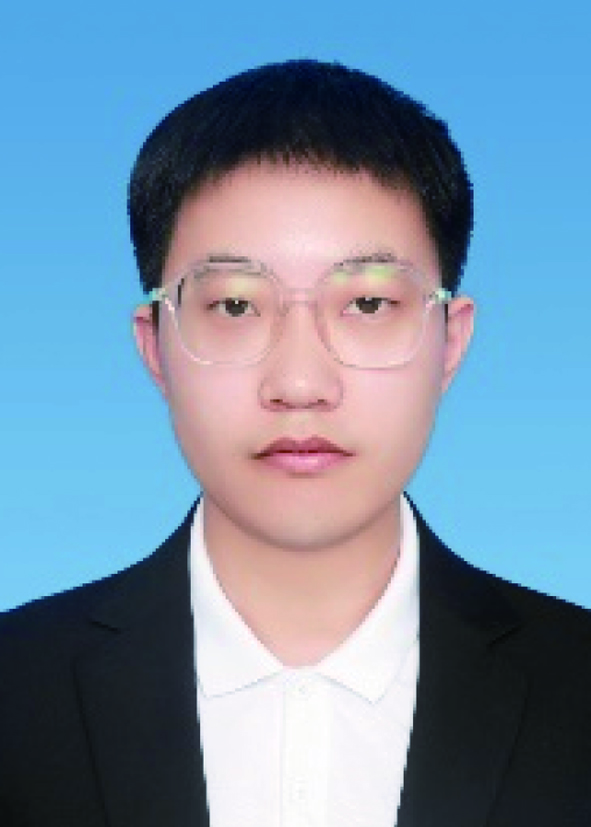 Jiale Shao is studying for a master's degree in optoelectronic information engineering at Ningbo University, Ningbo, China. His M.S. study was under the Joint Education Program between Ningbo Institute of Materials Technology and Engineering, Chinese Academy of Sciences and Ningbo University. His research interests focus on oxide-based optoelectronic memristive devices and their applications in brain-inspired computing.
Jiale Shao is studying for a master's degree in optoelectronic information engineering at Ningbo University, Ningbo, China. His M.S. study was under the Joint Education Program between Ningbo Institute of Materials Technology and Engineering, Chinese Academy of Sciences and Ningbo University. His research interests focus on oxide-based optoelectronic memristive devices and their applications in brain-inspired computing. Zongxiao Li got his PhD degree in 2016 at Harbin Institute of Technology, then joined Shenzhen university as assistant professor. Since October 2020, He joined Ningbo Institute of Materials Technology and Engineering, Chinese Academy of Sciences as a postdoc. His research interests include brain-inspired electronic devices, such as artificial synapse, neuron.
Zongxiao Li got his PhD degree in 2016 at Harbin Institute of Technology, then joined Shenzhen university as assistant professor. Since October 2020, He joined Ningbo Institute of Materials Technology and Engineering, Chinese Academy of Sciences as a postdoc. His research interests include brain-inspired electronic devices, such as artificial synapse, neuron.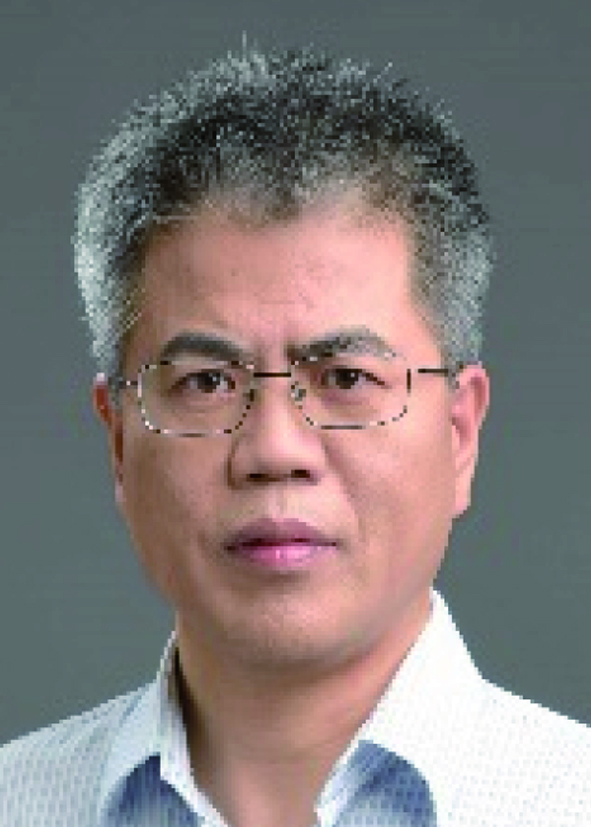 Huanming Lu is currently a professor in Ningbo Institute of Materials Technology and Engineering, Chinese Academy of Sciences. His research interests are mainly on the microstructure of new materials such as semiconductor materials, magnetic materials and energy storage materials.
Huanming Lu is currently a professor in Ningbo Institute of Materials Technology and Engineering, Chinese Academy of Sciences. His research interests are mainly on the microstructure of new materials such as semiconductor materials, magnetic materials and energy storage materials. Fei Zhuge received his Ph.D. degree in materials science from Zhejiang University, China, in 2005. He then became a JSPS postdoctoral fellow in Hiroshima University, Hiroshima, Japan. He joined Ningbo Institute of Materials Technology and Engineering (NIMTE), Chinese Academy of Sciences (CAS) in 2008. Since 2014, he has been a professor at NIMTE. Since 2018, he has been a Guest Professor at Center for Excellence in Brain Science and Intelligence Technology, CAS. His current research interests include low-dimensional semiconductor materials and devices, memristive materials and devices, and brain-inspired artificial intelligence.
Fei Zhuge received his Ph.D. degree in materials science from Zhejiang University, China, in 2005. He then became a JSPS postdoctoral fellow in Hiroshima University, Hiroshima, Japan. He joined Ningbo Institute of Materials Technology and Engineering (NIMTE), Chinese Academy of Sciences (CAS) in 2008. Since 2014, he has been a professor at NIMTE. Since 2018, he has been a Guest Professor at Center for Excellence in Brain Science and Intelligence Technology, CAS. His current research interests include low-dimensional semiconductor materials and devices, memristive materials and devices, and brain-inspired artificial intelligence.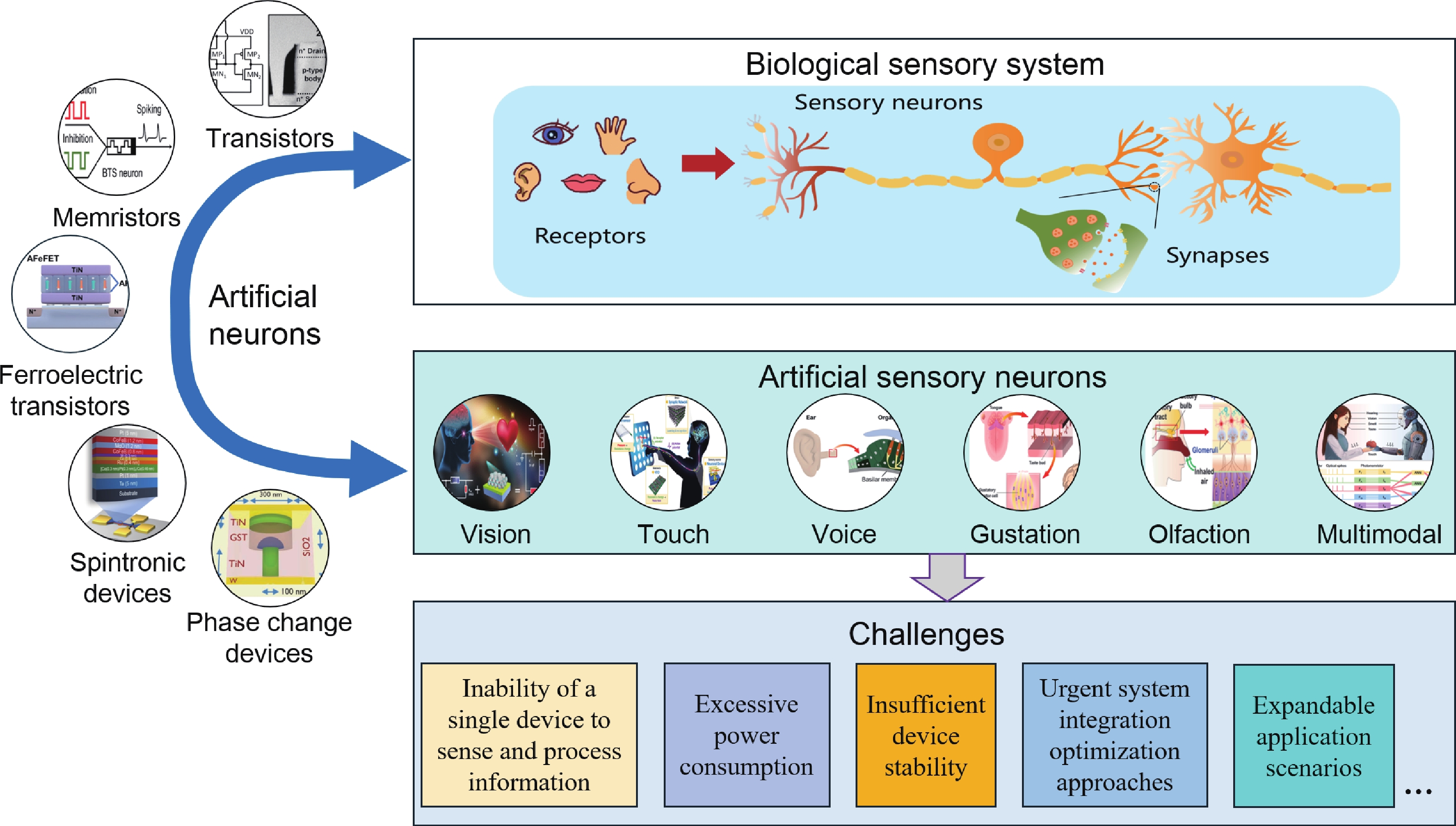
 DownLoad:
DownLoad:
